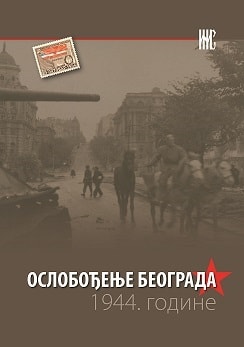Култура сећања на савезништво у Другом светском рату кроз називе улица, тргова и спомен-обележја
The Culture of Remembrance of the Alliance of WWII as Reflected in Names of Streets, Squares and Monuments
Author(s): Mile Bjelajac
Subject(s): Cultural history, Political history, Rural and urban sociology, Sociology of Culture, Fascism, Nazism and WW II, Politics of History/Memory
Published by: Institut za noviju istoriju Srbije
Keywords: Belgrade; streets and squares; Marshal Birjuzov; Marshal Tolbukhin; General Zhdanov;
Summary/Abstract: The renewed emergence in public of the question of respecting the tradition of the Anti-Fascist struggle and recognition of the allied (Soviet) contribution to the liberation of Belgrade in 1944 spurred the interest in reconsidering the practice of naming and renaming of streets which testify about that part of our common history. Although marking of monuments and maintenance of wartime graveyards, and even naming of streets after prominent personages are only part of the promotion of history of remembrance – since in our days it can be much more and stronger reflected in the media presence or in the form of schoolbook interpretations and attractive films or TV serials – we addressed this matter in capacity of a historian and an eyewitness. From a comparative survey of how marking of something which should represent lasting values was approached in various periods of history of Yugoslavia and now of Serbia, we glean that in our territory there was more ideology and „political correctness” than desire to measure with equal measure that which should always be esteemed – shedding of blood for the liberty of the country and the people, as well as the extended friendly hand in the hour of the direst necessity. Following the need of the moment, the town authorities in the time of the Kingdom of Yugoslavia named a street after the King’s general Petar Živković, in the very year the King imposed his dictatorship. It was renamed by his former oponent Milan Nedić in 1943. Overshadowed by Živković remained many fallen heroes or those whom he condamned or with whom he did away at the trial of Thessaloniki. Thus, the city did injustice to its defender colonel Tufegdžić and took away his name from a street in 1940. During the war, under occupation, streets were deprived of the names of former Serbian wartime and political allies. After the war ideological purges of „incorrect” or „uninteresting” local and allied names followed. In only few cases names deleted by the occupying and collaborationist administration were given back. Streetnames after Russian or Soviet wartime allies were no exception, only perhaps a more dramatic illustration of the change of „remembrance” in keeping with the changed political circumstances. After 1948 the names of streets and boulevards given after Russian great men, the Red Army and toponyms made famous during WWII started to disappear. After less than ten years, they started to return, as a sign of goodwill within the framework of improvement of bilateral relations. After the tragic incident in which a Soviet marshal and several generals, liberators of Belgrade were killed at Avala, the city renamed streets which had once born their names, after them again, and even added some new ones. During the transition of 1990, there was rush to repair all former „iniquities”. However, not even the newly proclaimed criteria were observed. Generals and marshals and the Red Army were once again the target of the reform. In accordance with our own insight and engagement we showed the history behind the scene, how the personality of marshal Biryuzov and the street bearing his name was saved from oblivion in 2004.
Book: Ослобођење Београда 1944.
- Page Range: 493-504
- Page Count: 12
- Publication Year: 2010
- Language: Serbian
- Content File-PDF

